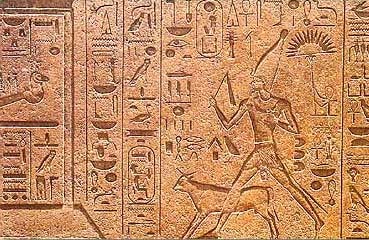Welcome to “Top Ten Egypt,” where we uncover the fascinating traditions and celebrations of ancient Egypt. Today, we delve into the enigmatic Hep Sed Festival, a momentous event that exemplified the power, vitality, and continuity of the Pharaohs’ rule. Join us as we step back in time and witness the splendor of this ancient festival, a celebration that united the divine and mortal realms.
The Significance of the Hep Sed Festival:
The Hep Sed Festival, also known as the Sed or Jubilee Festival, marked a significant milestone in a Pharaoh’s reign. It was a joyous occasion commemorating their continued reign, reaffirming their divine authority, and signaling their physical and spiritual renewal. The festival served as a declaration of the Pharaoh’s vigor and ability to maintain order and prosperity throughout the land.
Preparation and Ceremony:
Preparations for the Hep Sed Festival were elaborate and meticulous. The grand event involved extensive planning, including the construction and renovation of temples, the array of sumptuous offerings, and the gathering of dignitaries and officials from across Egypt. The ceremony itself commenced with a formal procession, as the Pharaoh, adorned in dazzling regalia, made their way to the sacred grounds.
Rites and Rituals:
Central to the Hep Sed Festival were various sacred rites and rituals. The Pharaoh, standing before the deities, would engage in rituals that symbolized their rejuvenation and the renewal of their divine mandate. These included purifying ablutions, rituals of protection, and symbolic actions echoing the Pharaoh’s role as the intermediary between gods and people.
The Sed Court:
A pivotal feature of the Hep Sed Festival was the Sed Court, where the Pharaoh showcased their physical prowess, leadership, and wisdom to the gathered audience. These displays included ceremonial races, wrestling matches, and captivating speeches, all designed to reaffirm the Pharaoh’s authority and inspire awe among the attendees. The Sed Court encapsulated the Pharaoh’s role as the embodiment of strength and prosperity.
Symbolism of Renewal:
The Hep Sed Festival held deep symbolic significance as it represented the Pharaoh’s rejuvenation and renewal of their powers. It marked the Pharaoh’s successful completion of a cycle and their ability to endure physical and spiritual challenges in order to maintain harmony and prosperity within Egypt. The festival also affirmed the Pharaoh’s connection to the gods, ensuring their blessing and continued divine favor.
Legacy and Modern Interpretation:
The Hep Sed Festival, while rooted in ancient tradition, still resonates today. Its celebration of power, renewal, and endurance serves as a timeless reminder of the strength and resilience of Egyptian culture. Modern interpretations of the festival have emerged, offering visitors an opportunity to witness reenactments and immerse themselves in the vibrant and awe-inspiring atmosphere of this ancient event.
The Hep Sed Festival in ancient Egypt was a momentous occasion, celebrating the Pharaoh’s power, renewal, and ability to maintain harmony and prosperity. Join “Top Ten Egypt” as we transport you to a bygone era, where the rulers of Egypt reaffirmed their divine authority and immortalized their reign through elaborate ceremonies and sacred rituals. Immerse yourself in the splendor and symbolism of the Hep Sed Festival, a testament to the remarkable culture and enduring legacy of ancient Egypt.



Comment (0)